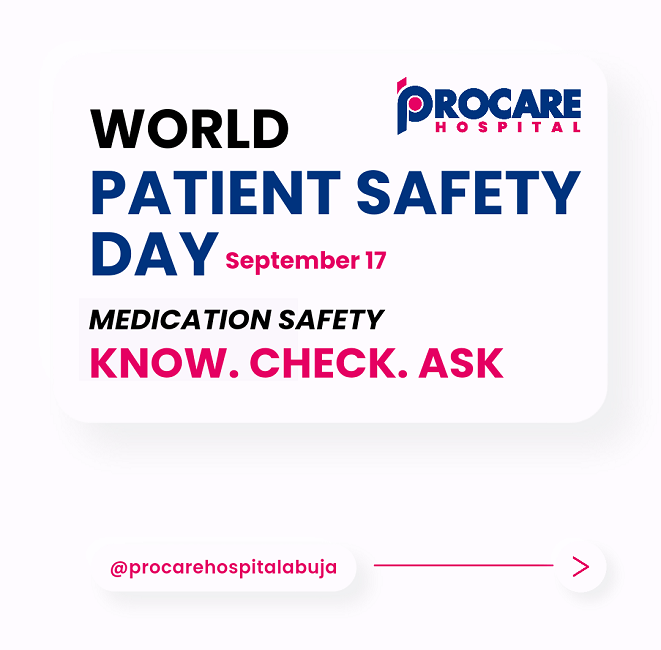WORLD PATIENT SAFETY DAY
THEME: Medication Without Harm
According to the National Library of Medicine, Patient safety is defined as the prevention of harm to patients. This emphasizes the system of care delivery that prevents errors; learns from the errors that do occur; and is built on a culture of safety that involves health care professionals, organizations, and patients.
Medication-related harm constitutes the majority of all harm in health care, and most of that harm can be prevented by safe care. It is also costly and psychologically devastating as a result of this burden, WHO has launched a campaign, titled “Medication Safety”, aimed at promoting safe medication practices to reduce medication-related errors.
The global campaign’s call to action is “KNOW. CHECK. ASK.” By doing so, patients and their caregivers as well as health care professionals (such as nurses, physicians, and pharmacists) are encouraged and empowered to take part in ensuring safer medication practices and medication use processes, including prescription, preparation, dispensing, administration, and monitoring.
KEY FACTS
- Medication harm accounts for 50% of the overall preventable harm in medical care (WHO, 2022).
- Unsafe medication practices and medication errors are leading causes of injury and avoidable harm in health care systems worldwide.
- Everyone, including patients and health care professionals, has a role in ensuring medication safety.

